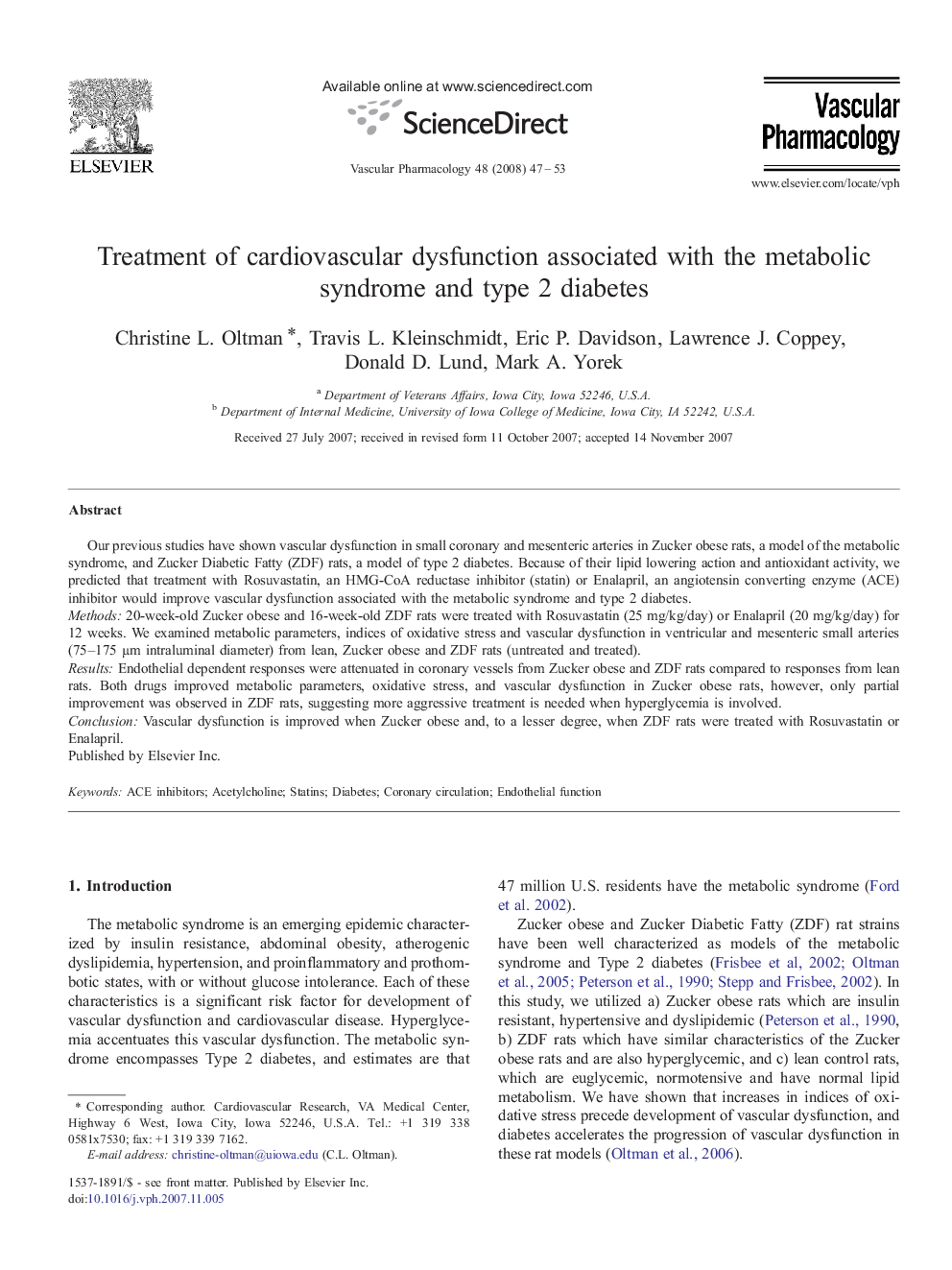| Article ID | Journal | Published Year | Pages | File Type |
|---|---|---|---|---|
| 2574882 | Vascular Pharmacology | 2008 | 7 Pages |
Our previous studies have shown vascular dysfunction in small coronary and mesenteric arteries in Zucker obese rats, a model of the metabolic syndrome, and Zucker Diabetic Fatty (ZDF) rats, a model of type 2 diabetes. Because of their lipid lowering action and antioxidant activity, we predicted that treatment with Rosuvastatin, an HMG-CoA reductase inhibitor (statin) or Enalapril, an angiotensin converting enzyme (ACE) inhibitor would improve vascular dysfunction associated with the metabolic syndrome and type 2 diabetes.Methods20-week-old Zucker obese and 16-week-old ZDF rats were treated with Rosuvastatin (25 mg/kg/day) or Enalapril (20 mg/kg/day) for 12 weeks. We examined metabolic parameters, indices of oxidative stress and vascular dysfunction in ventricular and mesenteric small arteries (75–175 µm intraluminal diameter) from lean, Zucker obese and ZDF rats (untreated and treated).ResultsEndothelial dependent responses were attenuated in coronary vessels from Zucker obese and ZDF rats compared to responses from lean rats. Both drugs improved metabolic parameters, oxidative stress, and vascular dysfunction in Zucker obese rats, however, only partial improvement was observed in ZDF rats, suggesting more aggressive treatment is needed when hyperglycemia is involved.ConclusionVascular dysfunction is improved when Zucker obese and, to a lesser degree, when ZDF rats were treated with Rosuvastatin or Enalapril.
